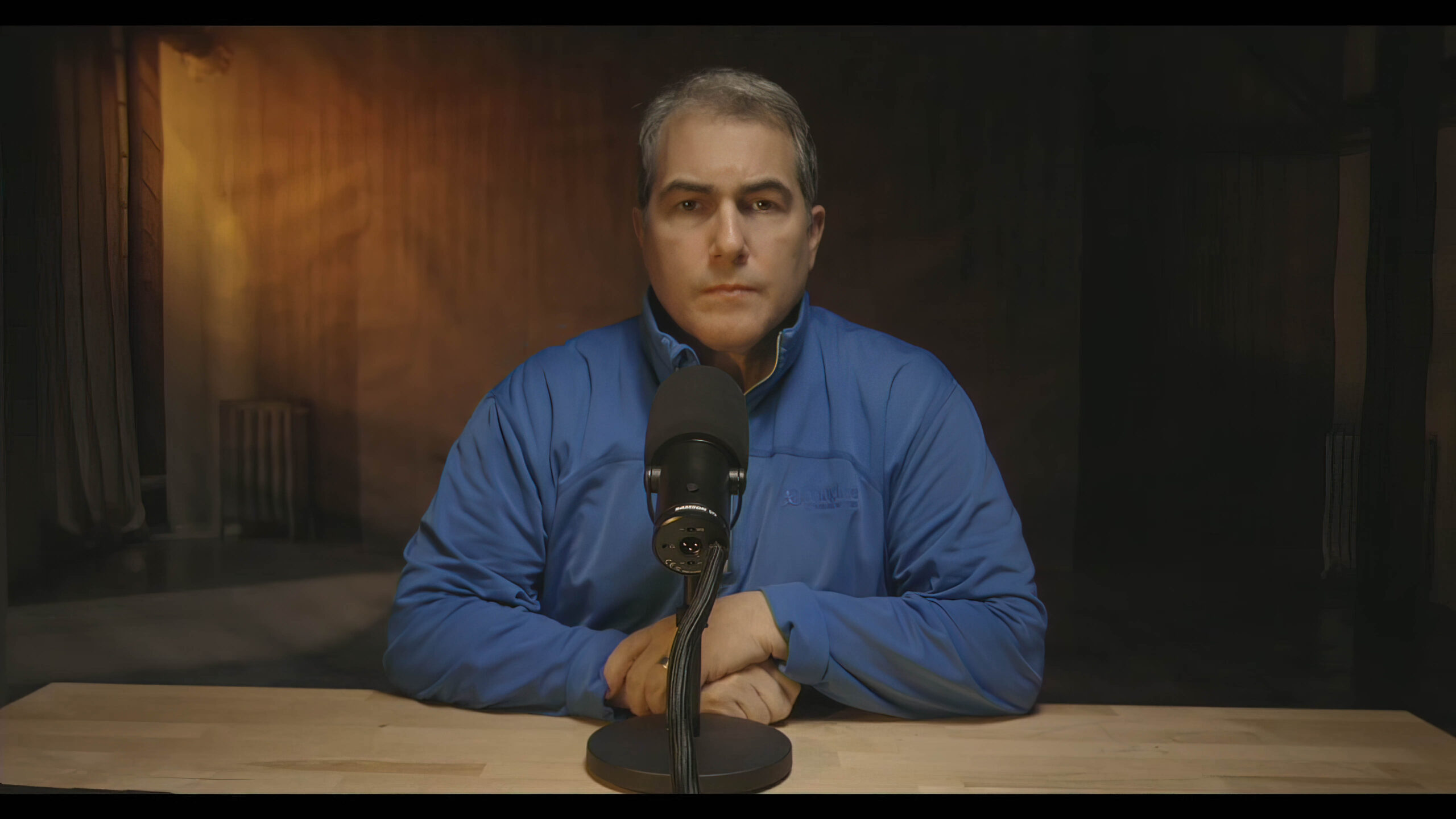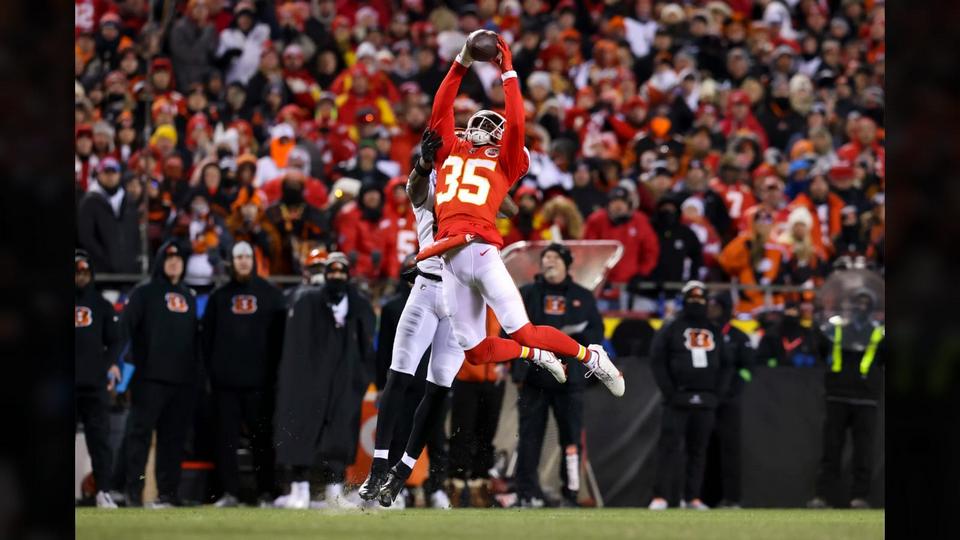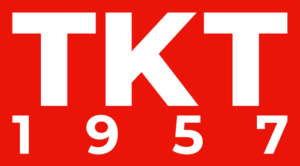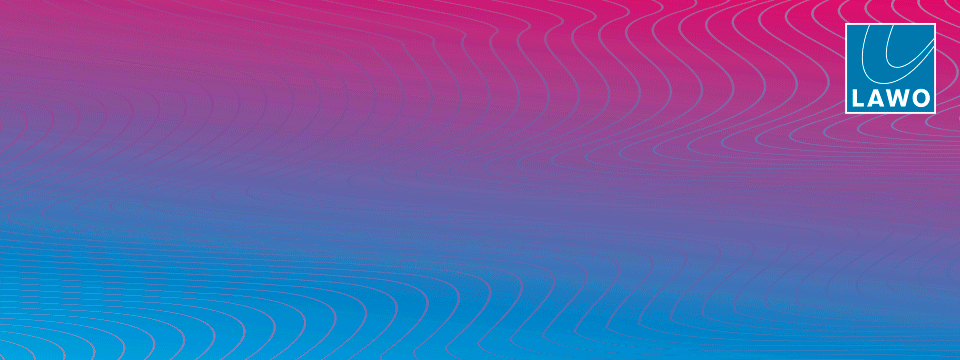Visionaries Online roundtable on «Broadcasting 2023. Super Bowl LVII: New Trends» – Ben Dolinky, Chief Broadcast and A/V Engineer-Mercedes-Benz Stadium, and Philip Grossman, producer and host of Visionaries, sit down to discuss the technology and broadcasting Major Sporting events.
Philip: Welcome to our first show on Visionaries. Today we’ll be talking about sporting events with my special guest- Ben Dolinky who is the Chief Broadcast A/V Engineer for Mercedes-Benz Stadium (MBS) here in Atlanta, Georgia. I got to know Ben through SMPTE events as well as professional engagements. Thank you for joining us.
Ben Dolinky: Thanks Philip for having me, it’s good to be here.

Comparison of Sports Events
Philip: I’ve been doing technology and been in the TV industry for a long time but sporting events are very different. I’ve had a lot of exposure to them in the last couple of months, a little bit closer than in the past. You, on the other hand, have been involved with themfor a long time. You did the Super Bowl back in 2019, and You have the Atlanta Falcons and the United…. How do you compare sporting events to general television?
Ben Dolinky: The big thing is that when you host a facility or host one of these big events like the Final Four, the Super Bowl, or something of that nature, all the vendors show up, especially when you have an event like the Super bowl. One of the great things for me was that it was so early on in the development of Mercedes Benz Stadium (MBS) , it was just the second year and we had the opportunity to host a major event like the Super Bowl. So it was a great time to audit every single piece of equipment in our control room. From an engineering perspective, when companies like Ross Video, Evertz Microsystems, and the likes who have been talking all year long about their equipment at the NAB or IBC, show up at your facility because the Super Bowl wants to do X…. It’s certainly a great time when you are a host city or a venue. It allows you to push to the limits of what you’re doing. For a Falcon game, we might utilize 11 cameras, 2-3 CG devices, or 4 replays but for a Super Bowl game, we’ll be using 15 to 19 cameras, 4 to 5 CG devices, and 7 to 8 replays so everything just gets exponentially bigger.

Philip: One of the things that I found interesting when I came by to visit you guys at the stadium was that I learned that there are actually two shows produced at a sporting event: There’s one produced for in-stadium, and the one produced for television. Can you please explain to those unfamiliar with that concept that there are really two shows produced?
Ben Dolinky: Where we are located here at Mercedes-Benz stadium is right down on the service level and right outside of our control room is the truck bay which is where all the production trucks come in for the big major events whether it’s the Falcons or a United match or the Superbowl. The TV trucks show up at the compound because that’s where the broadcast and production takes place for over-the-air production, for the NFL, stations like FOX, CBS, or NBC come in to take on all the production. They connect to our facility so that camera guys can patch into the BSP(Broadcast Service Panel) boxes that are spread out through the facility which come back down to the truck IO and that’s where the TV trucks hook in to get the feeds to do their production remotely in their trucks. For the in-house feed, what we do here at the Mercedes-Benz stadium is that all that production takes place here in our control room so that it’s all centralized just like a TV production truck but condensed in one space. So we’ve got our technical producers, technical director, producer, and director all housed right here in our control room and everything that takes place here is being displayed on our Halo video board.
Philip: Are you using your own cameras within the stadium or does the truck company bring them in and then share those with you or vice versa? How does that relationship work in the stadium?
Ben Dolinky: We share resources with the television company that comes through the other production trucks. So if they’ve got a Pylon cam or Skycam or some sort of angle that we would really like to get, they can patch right into the IO and we’ll get those feeds into our system and vice versa. If there’s a POV camera we might have on a visiting team locker room or the falcon’s locker room that the TV trucks might want, we can also share that with them.
Philip: In preparation for a typical football game, let’s say you’re doing an NFL Monday night, when do the trucks first roll in? Are the truck companies typically by the hosting network or the team? How does that relationship work and then what’s the process of bringing the show to air?
Ben Dolinky: It solely depends on the size of the show, if it is a Monday night football or Sunday night football, they’re typically here getting ready on a Wednesday or Thursday. They usually move those trucks across the country, which means that they could be coming from Los Angeles or Nashville. For a typical Sunday FOX one o’clock NFL game, those trucks usually show up Thursday or Friday. The trucks are usually NEP and that’s the contract set up by the broadcasters with the TV truck companies/mobile production units. They set up deals with them to rent their trucks and then send them on the road to set up shows.
Philip: Let’s contrast that with the Super Bowl, when do you start preparing for a Super Bowl? The planning and the trucks showing up, is there such a thing as a dress rehearsal for that?
Ben Dolinky: Luckily, here at Mercedes-Benz stadium, we had the college football championship the year before the Super Bowl which is kind of a dress rehearsal for us for hosting a major event like that. Then the following year when we had been planning for the in-house portion of it, we started using the college football championship as a template while working with Van Wagner, who produces the Super Bowl. We worked with them to build out what the show was going to look like. For us here in our brand new facility, that was the first IP production done for the Super Bowl so there were a lot of nuances that we needed to learn and work through and a lot of different things that they wanted to do as well. Talking about our display, it was the largest display at that time ever used for a Super Bowl so, a lot of real estate was involved including several things that they wanted to try out regarding stats and layouts. The process took about 6-8 months of planning and coordinating with the in-house staff here at Mercedes-Benz stadium as well as the Van Wagner group. And then, coordinating with all the different vendors to make sure that we were supported to have all the right people here.
Concerning the TV trucks, they usually show up a little less than a month before the game so once the NFC championship games have been decided which is about a little over two weeks before the game, then they start moving all of the trucks into place. In-house production usually takes about a month long so ATK comes in to handle all the in-house audio which could take about a month out of the actual game.
Philip: You brought up audio and I don’t think a lot of people know how much goes into audio production when they think of television. People think “I hear a referee and that’s about it”. Can you talk about how big an audio production is within an NFL game?
BenDolinky: It is absolutely massive. So they add an L-acoustic system that they had brought in here for the Super Bowl. We’ve got Danley Sound Lab speakers and they also brought in a line array system. I had just worked the Super Bowl in Arizona this year and ATK came in with the same thing and added to the L-acoustic systems that the Cardinals had added into that. The Super Bowl has major events like the halftime show, the halftime show is the biggest event outside of the game that’s taking place and the audio for that must always be in tip-top shape. There was a whole army coming in just to service the halftime show and there was another group coming in to work on just the game. For us, let’s say in a typical Falcon game, we’ve got 15-20 belt packs for comms being distributed but for this past Super Bowl, we had close to 300 belt packs. For the person managing the audio side of comms, that’s an over two weeks process for them involving placing antennas and testing signals all over the building. And that’s one thing a lot of people might not consider. When you think about it, it’s just the coordination that’s needed for just the wireless comm systems for all the producers and on-field talents that are out there, that’s one side of it and microphone coordination is another. So there’s an army of game-day frequency coordinators at the NFL so that way, everybody is coordinated because if you think about it, there are news agencies and people from all over the world showing up to the game, therefore the coordination on the RF frequencies are also a really big deal to ensure that no one is stepping on each other. There are a lot of nuances involved and it really does take a village here to do all of this and it is all a bunch of coordinating and working together.

Philip: Interestingly, you mentioned you had news agencies so there were other people there. Are there other production organizations or international distribution companies that make the Super Bowl a little bit different than a traditional NFL game?
Ben Dolinky: It’s just the number of broadcasters. Again, the only thing that would rival a Super Bowl is going to be a World Cup or an Olympics. Typically, where you might have the 300 section where the fans are sitting, that portion is carved out as excess media flows so we would have two to three hundred extra members of the media that are broadcasting to countries all over the world and they need a little table with their Radio setup and TV to monitor the game. Again the setup that’s needed for that is a month-long process.
Philip: As you mentioned, there’s the halftime show which is a show in and of itself. How did you guys handle the in-house production? What are you producing in the stadium for halftime? How are you integrated with what’s going on there?
Ben Dolinky: For the in-house side of it, we just get to sit back and relax and enjoy the show because we take a feed from the production company’s TV truck and we put it on display. This past Super Bowl, which is different from our Super Bowl here in Atlanta, the separate production company in Arizona actually tied in and took control of all the displays. Again, the in-house people weren’t worried about being on the same communication path or hitting the button at the right time or doing everything they wanted. We just handed control over to the third party who was able to control the main displays so it’s enjoyable for the in-house side because you get to sit back, relax and enjoy the game.
Philip: You’ve worked in San Francisco with the Giants (Baseball). How does something like baseball differ from football games in terms of the production that goes into it?
Ben Dolinky: The first thing that is completely different for baseball and from any other sport is that baseball cannot show live action on their displays so if the game action is going on, you need to have a still graphic which we call the “game in progress” that is usually up on your main display. So I think we averaged about 70 to 75 percent of the game on this look which means that we’re not showing live action. It’s usually for replays, inning breaks, pre-game, and post-game. That changes it from just a production standpoint. After all, firstly, you don’t need as many in-house cameras as the light for a football game because you’re actually covering the game. Also, the replays in baseball are a little different with regards to how it triggers, who triggers it, and who can call the replay versus in the NFL where you’re really aiding and abetting the team by putting up different angles trying to find the best replay angles as quickly as possible so that the team can throw a challenge. We’ve also got more interactions with the coaches there because we’re trying to help them out with the best angles so that they can challenge and figure something out quickly. The other thing with baseball is that it’s a much slower game and there’s no clock so we used to joke that there’s no clock in baseball theoretically, it can go on forever whereas, in football, there are quarter breaks, first downs and so everything is much bigger. So when a first down happens which could be every three or four plays, it gets loud with intense music whereas in baseball you’re kind of sitting around waiting for things to happen like a home run and then we react to it with all the fan graphics and such. I would say that football has fewer games because you only have 10 games and baseball has 82 plus.
Record 50 Million Americans to Wager $16B on Super Bowl LVII
Philip: Let’s say we have Atlanta United here in Atlanta soccer or football as they say in Europe, how does that impact how production is made knowing that typically there are no commercial breaks or timeouts? How does that differ when you guys are producing either in-house or through the production companies?
Ben Dolinky: In-house is great because once the ship has sailed, it’s gone. As you said, there’s no quarter break or timeouts, it’s two 45 minutes halves, so you know when the game is going to end and that’s great. It’s just game-action and coverage. For your second question, one of the things I have noticed is virtual ads. What they are trying to do right now on the end line of the pitches is what puts virtual ads up as doing virtual ad overlays on the field LED displays. In this way, let’s say CHOA Children’s Healthcare of Atlanta is one of our sponsors, it’ll make sense to show that on our screens here in Atlanta. But let’s say we’re playing in Los Angeles, they’re not going to run a CHOA ad on their in-house LED displays so they are working on a technology to have an overlay on top of that for the market here in Atlanta where you’ll see your in-house ads virtually overlaid on top of those LED ads. So in-house will see whatever they’re playing and then in broadcast, you would see whatever we can overlay on top of that.
Philip: Yeah. AR and VR technology is getting pretty amazing. So obviously, you guys at the stadium also have entertainment events, concerts, and such. How do they operate and how do they compare to a sporting event?
Ben Dolinky: It just depends on the event. So, we have a lot of concerts that we host here at Mercedes-Benz stadium and most of the time, the artists do not want to see themselves on that display on the Halo, they’ll bring in their own setups, their LED displays. And of course, they’ve paid a good deal to log those all around the country so they like to use those and don’t want that kind of attention being drawn away from that. So for the majority of the concerts, it’s more on the audio side. We try to ensure that the audio is good here in the building, we ensure that we can support them and again, we also consider what to do to ensure that the quality of audio in the building is top-notch. Again, if it’s a full house here, we would usually be hitting the upper 300 levels with our speakers. In the event that they ask for a specificdisplay on the HALO, we can tie it into them and we can put that on the board so they can do that. Basically, there are not a lot of products that we have to do internally, it’s more or less about taking a feed. But there are a lot of third-party events that might come into wanting to utilize our broadcast infrastructure here at Mercedes-Benz stadium so that might involve using a couple of cameras, CGS, and replay systems. We do a lot of different things. PRIMERICA hosts massive events here that are three days long. We also host the Passion conference as well, which is probably one of the largest non-sport-related events that we do here at Mercedes-Benz stadium. All those events bring different unique challenges with them, even though they might bring in their full broadcast infrastructure, for instance, the Passion conference, we’re still tying them into the Halo giving them control of the displays and always at the ready to support them in any way that they need. So even though we may not be using all of our cameras and infrastructure, the demand and the need to be here as the engineer is always there.
Philip Grossman: One of the things I’ve recently been doing a lot of work with is business continuity and disaster management. It just dawned on me that, in a Monday night NFL game, you don’t want anything to go wrong, but you have redundancy and redundant power and things like that in the stadium. I remember a few years back they lost power during the games at New Orleans. What kind of redundancy is put in place for a Super Bowl which consists of several activities?
Ben Dolinky: That’s a great point, Phil. So you do have to have three redundant sources of power as well as generators. As a result of the incident back in 2013, all sorts of redundancies have been put in place, especially regarding transmission. Before a SAT truck was usually used for transmission but now, a lot of broadcasters use the Switch or AT&T or Lumen and they also use the satellite truck as a backup. The fiber connectivity throughout the world has changed transmission over the last few years which has led to satellite trucks being used as well as TVU backpacks which are used to transmit feeds back into the studios. We had an EMG satellite truck lot which was always full in the first year but now local news isn’t bringing the trucks anymore, rather, they’re using backpacks. That is one thing that has changed. And just like you said, the redundancy side of it, every little piece and component has to be fully redundant so for us, during the Super Bowl, what that meant was that our Ross Tessera system which is the graphic system that’s playing content to the Halo, a 20,000 plus pixel display has to have six engines that are pumping that out and we had put in the secondary redundant stack. And again, one of the cool things about hosting an event is that you have all the top brands from the vendors like Ross, and Evertz that are coming up so we were able to create and tie in with Ross dashboards Tessera system through our router so that it’s become very seamless for an operator if one of our blue boxes were to fail, someone can just easily click a button and redundantly failover to our backup box. Whereas before that, it would have caused patching and changing of nodes. So that’s the benefit of the redundancy that we were able to utilize and still use at Mercedes-Benz stadium to this day.
Philip: Ben I can’t thank you enough for joining us today. I don’t think people realize how massive and in a short period a sports production gets put together, to be put on the air, and of course, you tear it all down and go to the next city to do it all over again. So I really appreciate your coming. Do you have any parting words… I know the Mercedes-Benz stadium is amazing, I was fortunate enough to go down there to spend some time and I appreciate you allowing me. Is there anything you’d like to add?
Ben Dolinky: We were just recently rated number one in the Voice to the fan for NFL for LED displays and number three for our sound system so we take great pride in that. We also rated number one in technology and overall fan experience so the Mercedes-Benz stadium puts a big emphasis on customer satisfaction so we really do like to listen and respond to what the fans say. With that, there’ll be some major upgrades taking place here over the next three to four years and we’ll be really grateful to be a part of that and to usher a new wave of technology here for the World Cup and other big major events happening in 2026 and beyond. So stay tuned here. If you come to the matches or the games here and you like what you see here, just wait a couple more years and we’ll enhance it even more.
Philip: Fantastic! I appreciate you being here and I look forward to coming down and catching a United game shortly. Again thank you very much, we appreciate it. We thank everybody for watching Visionaries.
Ben Dolinky: Thanks for having me, Phil. Take care.
TKT1957 held a Visionaries Online round table on «Broadcasting 2023. Super Bowl LVII: New Trends» on March 8, 2023.
The next Visionaries Online round table on «Broadcast 2023. XR/VR: Future Technology is Here», TKT1957 will be held on April 26, 2023.

Join
April 26, 2023
4:00 P.M. ET




